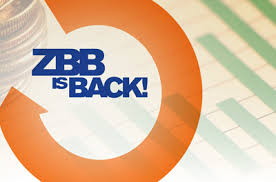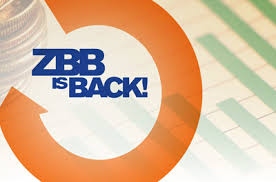
As U.S. companies turn their spending habits upside down to boost profits and to re-invest in their businesses, the number of such companies using a budgeting tool made famous in the 1970s by former U.S. President Jimmy Carter is surging.
Signals that a broader cross-section of U.S. companies anticipate turbulence in their revenue growth is given by the upswing in zero-based budgeting (ZBB). As wages and interest rates increase, and a stronger dollar makes their products more expensive overseas, they face more pressure on profits, too.
Campbell Soup Co, Kellogg Co, and Oreo cookie maker Mondelez International Ltd have already rolled out ZBB programs that promise billions of dollars in savings in the consumer staples, where sales growth is often capped in the low-to-mid single digits.
Now following suit are other industries, including finance, energy and manufacturing. according to consulting experts, across the globe and the U.S., use of ZBB in 2017 is expected to increase dramatically. Up from just 10 percent in 2014, in a survey of 406 North American companies, 38 percent of that group would use ZBB, Bain & Company reported last year.
"ZBB has taken on a life of its own," said Greg Portell, a partner at consulting firm A.T. Kearney.
Even build their budgets from scratch and justify each line item of spending in their budgets are required to be done by corporate manager in a ZBB approach. Earlier, using the previous year's budget as a starting point and adjusting it based on revenue and inflation projections, for example were typical process and this is a departure from such trends.
Redundant technology, outside consultants, corporate travel, terms of international assignments, and the size of a company's real estate footprint are issues that are to be considered.
However there are risks. Companies in this approach, focus on reinvestment that promotes new products and revenue growth is little compared to on restraining spending.
"You continuously have to ask what are strategic costs and how can we invest behind the things that drive the highest volume," said Jason Heinrich, a partner in Bain & Company's Chicago office.
When Carter, as president, said he would apply the budgeting principles to federal spending, ZBB first gained widespread attention in the late 1970s. However Ronald Reagan abandoned it when he became president in 1981.
Brazilian buyout firm 3G Capital, which used ZBB when it combined H.J. Heinz with Kraft Foods in 2015 is partly to be responsible for its recent resurgence.
According to Morgan Stanley, noting better than twice the average among rivals, with an estimated year-over-year gross margin expansion of 258 basis points, the combined Kraft Heinz now has the best profit margins among its peers. Kraft Heinz's stock sports a 2.5-point price-to-earnings-multiple premium over its peers.
In the consumer staples sector, which has banked on cost cutting to offset weak sales growth, 3G's success is one reason the highest adoption rate of ZBB. According to Thomson Reuters data, the consumer staples sector is on track to report profit of 6.3 percent off revenue growth of just 3.2 percent in the current fourth quarter reporting season.
ZBB is also being used by some to head off agitation from activist shareholders or even takeovers, like the Kraft Heinz deal, said Greg Kuczynski, a consumer staples analyst at asset manager Janus Capital.
“So many of them feel threatened,” he said. “They're desperately implementing ZBB packages."
(Source:www.reuters.com)
Signals that a broader cross-section of U.S. companies anticipate turbulence in their revenue growth is given by the upswing in zero-based budgeting (ZBB). As wages and interest rates increase, and a stronger dollar makes their products more expensive overseas, they face more pressure on profits, too.
Campbell Soup Co, Kellogg Co, and Oreo cookie maker Mondelez International Ltd have already rolled out ZBB programs that promise billions of dollars in savings in the consumer staples, where sales growth is often capped in the low-to-mid single digits.
Now following suit are other industries, including finance, energy and manufacturing. according to consulting experts, across the globe and the U.S., use of ZBB in 2017 is expected to increase dramatically. Up from just 10 percent in 2014, in a survey of 406 North American companies, 38 percent of that group would use ZBB, Bain & Company reported last year.
"ZBB has taken on a life of its own," said Greg Portell, a partner at consulting firm A.T. Kearney.
Even build their budgets from scratch and justify each line item of spending in their budgets are required to be done by corporate manager in a ZBB approach. Earlier, using the previous year's budget as a starting point and adjusting it based on revenue and inflation projections, for example were typical process and this is a departure from such trends.
Redundant technology, outside consultants, corporate travel, terms of international assignments, and the size of a company's real estate footprint are issues that are to be considered.
However there are risks. Companies in this approach, focus on reinvestment that promotes new products and revenue growth is little compared to on restraining spending.
"You continuously have to ask what are strategic costs and how can we invest behind the things that drive the highest volume," said Jason Heinrich, a partner in Bain & Company's Chicago office.
When Carter, as president, said he would apply the budgeting principles to federal spending, ZBB first gained widespread attention in the late 1970s. However Ronald Reagan abandoned it when he became president in 1981.
Brazilian buyout firm 3G Capital, which used ZBB when it combined H.J. Heinz with Kraft Foods in 2015 is partly to be responsible for its recent resurgence.
According to Morgan Stanley, noting better than twice the average among rivals, with an estimated year-over-year gross margin expansion of 258 basis points, the combined Kraft Heinz now has the best profit margins among its peers. Kraft Heinz's stock sports a 2.5-point price-to-earnings-multiple premium over its peers.
In the consumer staples sector, which has banked on cost cutting to offset weak sales growth, 3G's success is one reason the highest adoption rate of ZBB. According to Thomson Reuters data, the consumer staples sector is on track to report profit of 6.3 percent off revenue growth of just 3.2 percent in the current fourth quarter reporting season.
ZBB is also being used by some to head off agitation from activist shareholders or even takeovers, like the Kraft Heinz deal, said Greg Kuczynski, a consumer staples analyst at asset manager Janus Capital.
“So many of them feel threatened,” he said. “They're desperately implementing ZBB packages."
(Source:www.reuters.com)





